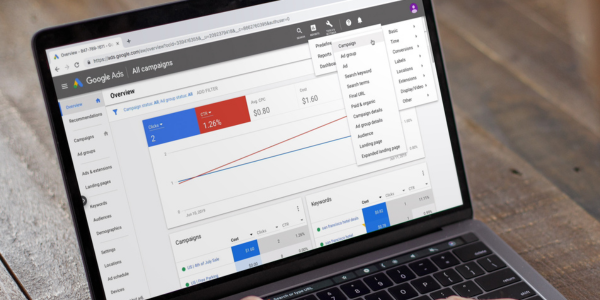content
Fake clicks (or click fraud) in PPC (Pay-Per-Click) advertising refer to intentional or fraudulent clicks on ads with the purpose of wasting the advertiser’s budget without any genuine interest in the product or service. This issue affects campaign profitability and distorts performance analytics. Let’s take a closer look at this issue in the blog article by ADV Advantage.
This problem has existed since the beginning of PPC advertising and continues to evolve alongside it. The negative impact of fake clicks is significant, making life difficult for marketers in several ways:
- Click fraud is often carried out by automated systems, making it a large-scale issue that is hard to respond to quickly.
- In competitive niches, the cost per click is significantly higher, meaning a single fake click can cost as much as ten legitimate ones.
- Some companies hire large groups of people to generate fake clicks, making the source difficult to identify.
- Conversion rates often drop sharply, even after the issue is resolved.
- Algorithms may misconfigure ad settings due to irrelevant traffic.
- Fake clicks make it harder to assess the real effectiveness of ads.
- The evaluation of keywords, audiences, and creatives may become inaccurate.
- A low engagement rate after clicks may reduce the quality score of ads in Google Ads or Facebook Ads.
How to Identify the Source of Fake Clicks?
Fake clicks do not happen randomly; they are artificially induced. Competitors looking to drain advertising budgets may be responsible, aiming to shift bidding trends in their favor. Additionally, brand haters might engage in click fraud to harm a company’s visibility and performance.

Statistical Indicators of Fake Click Activity:
- Low time spent on site – users quickly leave the page.
- High bounce rate – if nearly all users exit the site immediately after clicking, it could indicate fake traffic.
- Unusually high click volume from a single IP address – the same user (or bot) repeatedly clicks on the ad.
- Activity spikes from suspicious regions – for example, many clicks coming from countries outside the target audience.
- Imbalanced click-to-conversion ratio – an abnormal number of clicks with very few actual purchases or meaningful actions.
Most Effective Methods to Combat Fake Clicks
CAPTCHA and Other Validation Tools
Validation tools have played a crucial role in filtering out suspicious traffic. However, traditional CAPTCHA systems often frustrate real users. Today, Google’s reCAPTCHA requires minimal user interaction—just a single checkbox. Implementing such tools is essential at the first signs of suspicious activity, not just for PPC ads but for overall website security.
Blocking IP Addresses
Google Analytics and Google Ads provide tools to analyze incoming traffic and create exclusion lists of suspicious or problematic IP addresses. By manually identifying these addresses and adding them to exclusion lists in ad campaign settings, advertisers can quickly block fraudulent activity. Suspicious IP addresses can also be found in server logs.

Targeting and Geo-Targeting Optimization
Even if you have precisely defined your target audience, it is wise to exclude high-risk user groups. This risk level can be determined by analyzing suspicious traffic behavior, platform usage, and location. For high-risk groups, a better approach is to adjust bidding strategies to avoid paying per click.
Keyword Optimization
PPC marketers must regularly optimize keyword lists to prevent unwanted traffic growth. Updating the negative keyword list and refining keyword selection by removing ambiguous terms can reduce fraudulent clicks.
Focus on Remarketing
Adversity can be turned into an advantage. During periods of increased fake click activity, shifting attention and budget to remarketing lists can be beneficial. Additionally, this is an excellent time for retargeting—expanding audience reach based on key parameters.
Seek Assistance
Handling fake click issues alone is not always easy. External protection services like ClickCease, Fraudlogix, and PPC Protect can help mitigate the problem. Google and Facebook may also refund losses if click fraud is proven. These services are officially recognized by Google and Meta and offer free trials. Their flexible pricing plans enable real-time analysis of incoming traffic, helping businesses save 15-20% of their advertising budget each month.
Educate Your Team to Respond to Fake Activity
Investing in team awareness is a key step toward reducing risks and preventing significant losses. Sharing experiences is valuable, but specialized courses from seasoned PPC professionals can provide crucial insights into click fraud. Learning from others’ mistakes is always the best approach.

Conclusions
Fake clicks (click fraud) pose a significant challenge to PPC advertising by distorting analytics and depleting budgets. However, a range of strategies can effectively counter this issue, including CAPTCHA implementation, IP blocking, geo-targeting adjustments, and third-party fraud prevention services. Regular statistical analysis and team training can help minimize risks and enhance the overall efficiency of advertising campaigns.
Subscribe to our newsletter



